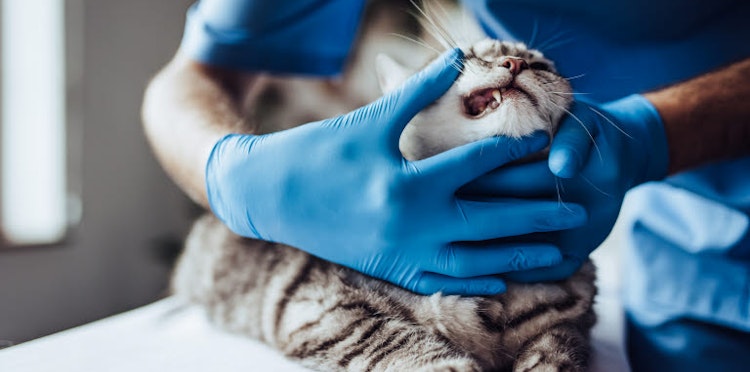Tooth loss (periodontitis) in cats

Check your cat's teeth regularly to detect changes in time
A coating of plaque forms on cats' teeth and can cause inflammation of the gums (gingivitis) which can lead to tooth loss (periodontitis). It's important to brush your cat's teeth regularly to remove the coating.
Symptoms of periodontitis
- Bad breath
- Irritated gums
- Loose teeth
- Your cat pulls to open its mouth or scratches against its mouth
- Decreased appetite and salivation
- Problems with chewing
- Aggression and depression
It's not always obvious when a cat has pain in their mouth. They rarely stop eating because of the pain, but rather eat with the side of their mouth where it hurts least.
What is periodontitis?
Periodontitis, often referred to as tooth loss, is a chronic inflammation of the supporting tissue of the tooth that first destroys the soft tissue around the tooth and later the jawbone, leading to loose teeth. Periodontitis can be local in the oral cavity or general. Plaque formation is what leads to periodontitis and calculus is seen in varying degrees.
The damage caused by the disease is irreversible. Periodontitis can lead to root tip abscesses, tooth fractures as teeth become more brittle, and infection in the jawbone.
How periodontitis is treated
Treatment consists of trying to stop the process through careful dental care at home. In addition, regular professional measurement and cleaning of dental pockets, dental x-rays and by extracting loose teeth as needed.
Tooth loss is a late symptom
Tooth loss is a late symptom in the disease picture. If your cat starts to lose teeth, they've had a dental disease for a long time. Tartar is most harmful when it has spread below the gum line. There, the bacteria can grow and the infection can spread even deeper. It is also where tartar is most difficult to detect, so the infection can spread to the root of the tooth and cause root tip abscesses.
Brush your teeth for prevention
The best way to prevent the formation of plaque, tartar and other dental diseases is to brush the cat's teeth regularly - preferably daily. Get the cat used to tooth brushing at an early age and make it a routine, for example brushing the cat's teeth before you brush your own teeth. Remember to also keep an eye on the cat's gums.


